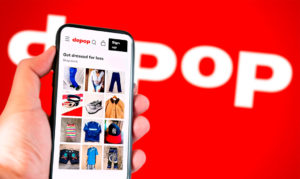Whiplash Team, March 21st 2025
Generation Alpha: The future of consumer behaviour and branding
Generation Alpha—those born from 2010 onward—is reshaping the global market. By 2025, this generation is expected to reach 2 billion people worldwide, making it the largest and most digitally savvy cohort in history. In Spain, there are an estimated seven million Alphas, representing a significant portion of the country’s younger population.
Though still in their childhood and early teens—at most 15 years old—Generation Alpha is already making its mark on the consumer landscape. And they’re not just influencing purchases through their parents; they’re making their own buying decisions.
While they share many traits with Generation Z, Generation Alpha has distinct behaviors and values that set them apart. Understanding them is critical for brands, as they are poised to become the most influential consumer segment in history.
What sets this generation apart is their deep-rooted connection to technology. True digital natives, Alphas have been immersed in digital devices and online platforms from birth. This constant exposure has shaped the way they interact with the world and accelerated their maturity compared to previous generations—a phenomenon known as “up-aging.”
Beyond being passive users, Alphas are active content creators and digital world-builders. Platforms like Minecraft, Roblox, and Fortnite give them the tools to design and customize virtual spaces, fostering creativity and problem-solving skills.
This “builder” mindset also extends into the real world, where they seek personalized and meaningful experiences.
Shaping purchasing decisions
Despite their youth, Generation Alpha already wields significant influence over family spending. In Spain, 41.3% of parents say they consider their children’s opinions when purchasing an electronic device, and 14.7% consult them directly.
On a global scale, children from this generation influence 49% of household spending. In the U.S., a study by DKC found that kids aged 8 to 13 spend an average of $45 per week—up to $2,350 per year. When scaled across all Generation Alpha consumers in the country, that translates to a staggering $50 billion in purchasing power.
Beyond influencing family purchases, many Alphas are also earning their own money. A significant percentage generate income by buying and reselling products online, while others take on small jobs outside the home or get paid for completing household chores. This financial independence at an early age strengthens their role as consumers shaping their expectations of brands and the marketplace.
What Alphas value in brands
Generation Alpha has a strong sense of social and environmental responsibility. They care about sustainability, inclusion, and corporate ethics. Studies show that 70% of Alphas prioritize experiences and social causes over price when making purchasing decisions.
They also expect brands to be authentic and transparent, favouring those that align with their values and demonstrate a genuine commitment to meaningful causes.
How brands can connect with Generation Alpha
To capture this generation’s attention, brands need to adapt their strategies to align with Alpha consumers’ preferences:
- Leverage cutting-edge technology – As digital natives, Alphas expect brands to integrate emerging tech like AI, augmented reality, and immersive experiences into their offerings.
- Create authentic, relevant content – This generation values brands that feel real and speak to their interests, rather than those that push traditional advertising.
- Commit to social and environmental causes – To resonate with Alphas, brands must demonstrate real action in sustainability, community initiatives, and corporate transparency.
- Offer personalized and immersive experiences – Whether through innovative retail spaces or interactive digital platforms, brands that provide engaging experiences will win their loyalty.
- Stay flexible and adapt quickly – Trends shift fast, and brands must be agile to keep up with Alpha consumers’ evolving preferences.
Who’s getting it right—and who’s falling behind
Some brands are already excelling at engaging Generation Alpha.
For example, Nike has successfully captured their attention through metaverse experiences and collaborations with digital creators on platforms like Roblox.
Lego has also adapted well, integrating augmented reality into its physical sets and offering interactive experiences that resonate with this tech-savvy generation.
On the other hand, some brands have struggled to connect. Facebook, for instance, has lost relevance among younger users, who prefer more interactive and visually engaging platforms like TikTok and Snapchat.
That Generation Alpha is redefining the global consumer landscape is a sure thing.
Their deep familiarity with technology, combined with a strong commitment to social and environmental causes, means brands must embrace innovation and authenticity to earn their trust, attention, and long-term loyalty.




